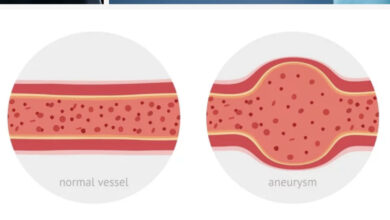PREVENTION OF CARDIOVASCULAR DISEASE: Decades of Learning and Progress!

For decades, Cardiovascular Disease (CVD), and heart disease, in particular, has been the number one killer of American adults. Heart attacks, strokes, and vascular disease have taken more lives than any cause other than accidents. One in four deaths annually is caused by heart disease, and that is true of American men and women of all ages and races.
For that reason, millions of dollars and untold hours have been spent researching ways to prevent heart disease and reduce the deaths attributable thereto. Recently, I read an article containing a mnemonic devised to emphasize the factors responsible for causing CVD. A mnemonic is similar to an acronym: a big word that simply means the words of a phrase are replaced by the first letter of each word. For example, FBI and IRS are acronyms for Federal Bureau of Investigation and Internal Revenue Service.
A mnemonic, on the other hand, is a group of letters that represent a phrase or list of items, organized in such a way as to be easier to remember. An example of such is “On Old Olympus Towering Top, A Finn and German Viewed Some Hops” a phrase that helps doctors remember the names of the 12 cranial (head and neck) nerves of the human body. The letters OOOTTAFAGVSH are the first letters of those nerves—Olfactory, Optic, Oculomotor, Trochlear, Trigeminal, Abducens, Facial, Auditory-Vestibular, Glossopharyngeal, Vagus, Spinal Accessory, and Hypoglossal nerves. Remembering that phrase makes it easier to remember the names of the nerves.
Doctors at Johns Hopkins Medical School in Baltimore came up with the mnemonic below which makes it easier to remember the factors and procedures that are important for preventing cardiovascular disease. Simply enough, the mnemonic is
A B C D E F G
That’s easy to remember! All you have to do is recall what A B C D E F and G represent. Each item is something that alerts people to, or plays a role in reducing, cardiovascular disease.
Those important factors are:
A. Aspirin, Anti-inflammatory medication, Assess risk factors
B. Body weight, Blood Pressure
C. Cigarette smoking Cessation, Cholesterol Control
D. Diet, Diabetes management, Dream (adequate sleep)
E. Exercise
F. Factors of environment (air pollution, annoying noise, bullying, job stress)
G. Genetics
These risk factors have long been recognized and recommended for preventing CVD, and should be incorporated into our daily lives. Organizing them into a neat, easy to remember, phrase, or mnemonic, is something new. By listing them alphabetically (A,B,C,D,E,F,G), it is hoped attention will be drawn to the importance of heeding these warnings and following this advice. You couldn’t make it simpler or easier to understand.
Reference: Https://www.patientcareonline.com/view/5-questions-on-how-to-manage-hypertension-in-primary-care





The layout of your site is fantastic and makes for a great user experience.
Thanks